Bad Men of Missouri

Brief Synopsis
Cast & Crew
Ray Enright
Dennis Morgan
Jane Wyman
Wayne Morris
Arthur Kennedy
Victor Jory
Film Details
Technical Specs

Synopsis
At the end of the United States Civil War in 1865, the Younger brothers, Jim, Bob and Cole, return to their home state of Missouri to discover that carpetbaggers from the North have taken over the state. Because money issued by the defeated Confederate government is now worthless, many farmers cannot pay their taxes. William Merrick, a carpetbagger, takes advantage of this to drive farmers off the land in the railroad's right of way in order to obtain it for himself. Shortly after their return, Martha Adams, Cole's girl friend, dies when the Adams family is forced to leave their home. Hank, the brothers' father, is also threatened with losing his farm for failure to pay his taxes. When Merrick arrives with Sheriff Brennan to take possession, Hank tries to argue his rights and is shot by Greg Bilson, one of Merrick's men, who also kills Brennan. When Cole and Bob return their gunfire, one of Merrick's men sets their house on fire, driving the Youngers away. A warrant is sworn out for the Youngers for Brennan's murder and they go into hiding. A few days later, Pettibone, who works for Merrick, takes the stagecoach to make a delivery of money. The Youngers steal it from him, and at Jim's suggestion, return the money to the farmers so that they can pay their taxes. During a train robbery, the Youngers meet Jesse James and join his gang. The Youngers continue to rob the carpetbaggers and distribute the money to farmers who are down on their luck. Bob is wounded during one of the robberies and when they stop for a doctor, they are recognized and the doctor's office is surrounded by deputies. Jim, who had been at the post office mailing a letter to his girl, Mary Hathaway, stampedes a herd of cattle and the Youngers escape under their cover. Because Bob's injury slows the men down, the Youngers and the Jameses separate. Pettibone suggests that Merrick use Mary to lure the Youngers into the open. They arrest her as an accomplice and Jim offers to turn himself in if Mary is released. That night, Cole and Bob break into the jail where Jim is being held and learn that Merrick and Bilson plan to have Jim murdered when he is moved from the jail. Because Merrick's men have been ordered to shoot at anyone wearing a duster, the Youngers force Merrick and Bilson to wear their dusters and send them out into the street where vigilantes kill them. The Youngers continue to steal and are captured in Minnesota where Mary visits them to explain that Missourians, who see them as heroes, have started a petition for their release.

Director
Ray Enright
Cast

Dennis Morgan
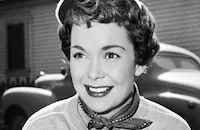
Jane Wyman

Wayne Morris
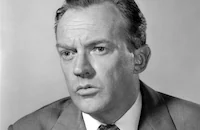
Arthur Kennedy

Victor Jory

Alan Baxter

Walter Catlett
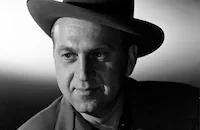
Howard Da Silva
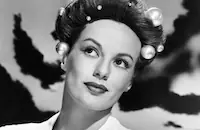
Faye Emerson
Russell Simpson
Virginia Brissac
Erville Alderson
Hugh Sothern
Sam Mcdaniel
Dorothy Vaughan
William Gould
Robert Winkler

Ann Todd

Roscoe Ates
Frank Wilcox
Spencer Charters
Duncan Renaldo
Frank Mayo

Jack Mower
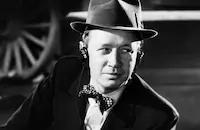
Eddie Acuff
Trevor Bardette
Eddy Waller
Herbert Heywood
Dix Davis
Sonny Bupp
Henry Blair
John Beck
Jack Carr

Tom Wilson
Art Miles
Dutch Hendrian
Bud Osborne

Howard Mitchell
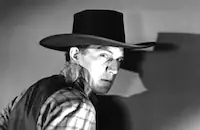
Tom Tyler
Leah Baird
Creighton Hale
Stuart Holmes
Arthur Aylsworth

Paul Panzer
Wade Boteler
Joel Friedkin
Glen Cavender
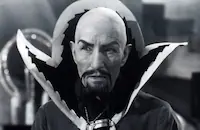
Charles Middleton
Bob Perry

Ray Teal
Arthur Loft
Ed Stanley
Vera Lewis
Milt Kibbee
Crew
Milo Anderson
Lester Cole
Robert Foulk
Charles Grayson
Benamin Russell Hanby
Howard Jackson
Stanley Jones
Mrs. Pearl May Kearns
Robert E. Kent
Clarence Kolster
Hal Long
Art Lueker
Allen Rivkin
Harold Shumate
Ted Smith
Charles Tedford
Harlan Thompson
Arthur Todd
Barry Trivers
Jack L. Warner
Perc Westmore

Film Details
Technical Specs

Articles
Bad Men of Missouri
By Glenn Erickson

Bad Men of Missouri
Quotes
Trivia
Humphrey Bogart rejected a role in this film, with the words "Are you kidding?"
Notes
News items in Hollywood Reporter add the following information: Ben Stoloff was originally pencilled in to direct. William K. Howard was then scheduled to direct but was replaced by Ray Enright when the former was assigned to Law of the Tropics (see below). Humphrey Bogart was suspended after he turned down the role later played by Dennis Morgan, and Sam McDaniel replaced Willie Best in the role of "Wash." James Cagney, Edward G. Robinson, George Raft, George Brent and John Garfield were all considered for the film. A March 20, 1941 Hollywood Reporter news item lists Ronald Reagan in the cast and a Hollywood Reporter production chart includes Ricardo Cortez in the cast, but neither appeared in the film. This film marked Faye Emerson's debut. According to a Warner Bros. motion picture press release, the studio received a petition from James D. Idol, the mayor of Harrisonville, MO, asking that the film's world premiere be held in the town in honor of the Younger brothers' father, Henry W. Younger, who had been the second mayor. Some scenes were filmed on location in Sonora, CA.
The real Younger brothers, who lived during the later 19th century, turned outlaw after the end of the Civil War. In 1866, Cole Younger joined Jesse James and was followed by Jim, John and Bob. John was shot dead by Pinkerton detectives in 1874, but the rest of the gang continued to rob banks and trains. In 1876, when the gang tried to rob a bank in Northfield, MN, Jim and Bob were injured. Jesse James left the wounded men behind with Cole and the three were eventually captured and sentenced to life imprisonment. Bob died in jail, and after being parolled, Jim committed suicide and Cole took a job selling tombstones. Technical advisor Pearl May Kearns was Cole Younger's last surviving relative.
Among the many films that feature the Younger brothers are the 1948 Warner Bros. film The Younger Brothers, the 1948 RKO film Return of the Bad Men, and the 1950 Paramount film The Great Missouri Raid (see below); The Maverick Queen produced by Republic in 1956 and starring Barbara Stanwyck and Alan Hale and directed by Joseph Kane; the 1958 Allied Artists film Cole Younger, Gunfighter, directed by R. G. Springsteen and starring James Best; The Great Northfield Minnesota Raid produced by Universal in 1972, starring Cliff Robertson and Robert Duvall and directed by Philip Kaufman; and The Long Riders, directed by Walter Hill in 1980 for United Artists and starring David Carradine, Keith Carradine and Robert Carradine.















